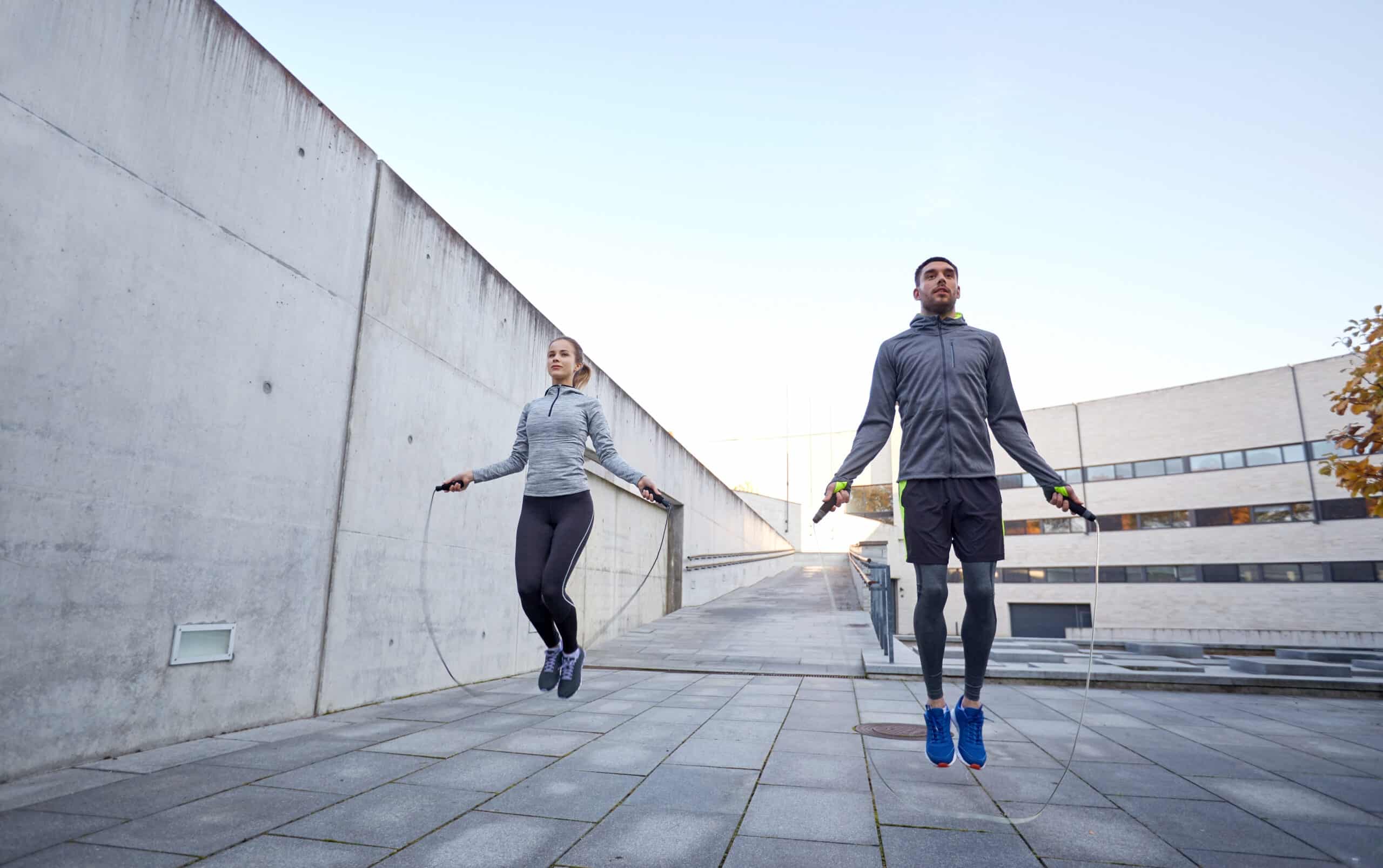Running produced almost twice the peak force on the kneecap than skipping; average peak force on the knee hinge was 30% greater. Those who skipped burned 30% more calories. According to the researchers, this study confirms that skipping can be used as an alternative to running.
Whether running or skipping stretching the knees regularly, wearing the proper shoes, maintaining good posture, and maintaining a healthy weight can help to prevent knee pain. 79% of runners report some kind of injury with the most common affecting the knees and lower extremities; knee injuries are likely caused by the force on the bones and joints observed in this study.
Runners have a cyclical gait landing with the impact absorbed in one leg while launching using force of the other leg. Skipping has a period of support in the natural gait by first stepping and hopping on one leg, then step and hop on the other, repeating the process. This gives both legs a small moment of support that helps to minimize the force applied when the feet hit the ground.
Those with pre-existing knee issue can replace running with shipping to help reduce knee pain while exercising according to the researchers. Keep in mind that while running puts less impact on knee joints it can put more repetitive stress on the ankles and calves. For best results combine skipping with other forms of movement to maintain overall joint health such as alternating between running and skipping every other day, especially if one activity make you feel sore.
“Vary the forms of cardio on different days. Each activity — skipping and running — requires slightly different engagement from the muscles involved,” Thanu Jey, DC, clinic director at Yorkville Sports Medicine Clinic in Toronto said. “Therefore alternating on days would be good especially if you feel sore after completion of either.”
“Certainly, running is an integral component of many athletic activities and we are not unaware of the aversion some people may have toward performing skipping as a standard component to their physical regime, but skipping has nonetheless emerged from this study as an alternative form of locomotion with untapped potential,” Jessica McDonnell, lead study author and a doctoral candidate at East Carolina University in Greenville, North Carolina, told Reuters.
“In people who have pre-existing knee issues, this can mean less knee pain with exercising with skipping rather than running,” Dr. Derek Ochiai, sports medicine doctor and orthopedic surgeon at Nirschl Orthopaedic Center in Virginia, told Healthline. “However, with the shorter strides, you will not travel as far skipping. Skipping burns more calories, which makes it more efficient in terms of exercise, but less efficient as a means of travel.”
Skipping can be done almost anywhere. Participants in this study skipped on a treadmill going at a constant rate, but this can cause accidents since skipping gait follows a constant rate and this may also increase the risk of injury, thus it is not recommended to skip on a treadmill.
Sometimes exercising can be hard to get motivation to do as it feels more like a chore, skipping can help to make it feel more fun, research shows that doing activities that are enjoyable are a more effective way to exercise. So why not try skipping your way to better health and pain free knees while having fun.




